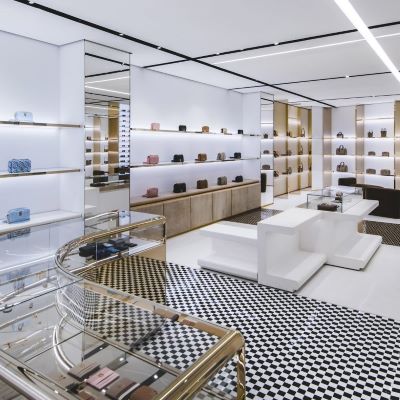Slower demand for luxury impacts Burberry’s full year forecasts

Despite a revenue increase in the first half of its fiscal year, the UK-based luxury group is now less optimistic about its full year forecasts due to a gradual slowdown in luxury demand worldwide
“We made good progress against our strategic goals, executing our priorities at pace. We continued to build momentum around our new creative vision with the launch of our Winter 23 collection in September, the first designed by Daniel Lee. While the macroeconomic environment has become more challenging recently, we are confident in our strategy to realise our potential as the modern British luxury brand, and we remain committed to achieving our medium and long-term targets”, commented Jonathan Akeroyd, Chief Executive Officer
First Half Results
In the first half of fiscal 2024, which ended on the 30th of September, Burberry’s revenue increased by 4% as reported or by 7% at constant exchange rates, reaching 1.39 billion British pounds (1.60 billion euros), on a comparable basis to the same period of last fiscal year.While total retail sales grew by 6% as reported and by 10% current exchange rates during the first half of fiscal 2024, with comparable store sales increasing by 10%, to 1.12 billion British pounds (1.29 billion euros), the wholesale revenue declined by 8% at both rates to 241 million British pounds (276 million euros), “driven by a weak Americas performance”.
In the Americas region, comparable sales growth fell by 9% in the first half of the financial year, on a comparable basis to the same period of fiscal 2023 – down by 8% and by 10% year-over-year in the first and second quarters, respectively.
On the other hand, the Asia Pacific region recorded a comparable sales growth of 18%, as compared to a similar period of fiscal 2023, “with a strong Q1 recovery of 36% against a period that saw COVID-19 related disruption in Mainland China and slowed to 2% in Q2 against a tougher comparative”.
Similarly, the EMEIA* region posted a first half comparable store sales increase of 14% year-over-year, with a slowdown from the first (up by 17%) to the second quarter (up by 10%), mainly due to tourism growth, especially in continental Europe, with the UK lagging behind due to the UK due “to the withdrawal of VAT refunds in the UK since January 2021”, considers Burberry.
In the six months to the 30th of September, the company’s adjusted operating profit totalled 223 million British pounds (256 million euros), up by 1% as reported and down by 6% at constant exchange rates, as compared to a similar period in 2022.
Burberry’s profit before taxes was 219 million British pounds (251 million euros) in the first six months of the current fiscal year, as compared to the figure of 251 million British pounds (288 million euros) recorded in the same period of the prior fiscal year. In the end, the company’s attributable profit totalled 158 million British pounds (181 million euros), declining from the 193 million British pounds (221 million euros) registered a year ago.
Guidance
“We are confident in our strategy and remain committed to achieving our medium and long-term targets”, reads the luxury group’s statement. But “the slowdown in luxury demand globally is having an impact on current trading. If the weaker demand continues, we are unlikely to achieve our previously stated revenue guidance for FY24”.Therefore, its full year adjusted operating profit is expected towards the lower range previously established – between 552 million British pounds and 668 million British pounds (between 634 million euros and 767 million euros).
EMEIA stands for Europe, the Middle East, Africa, and India
Image Credits: hero-magazine.com



















